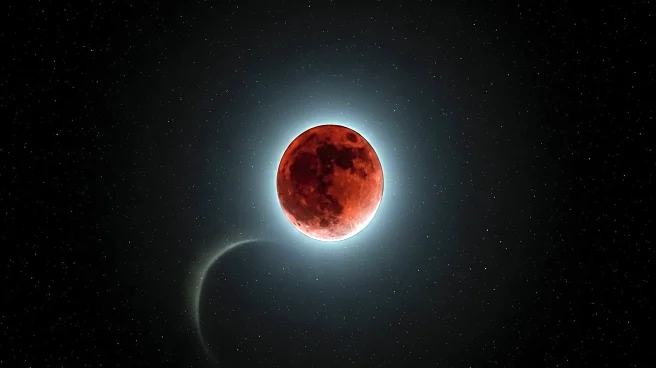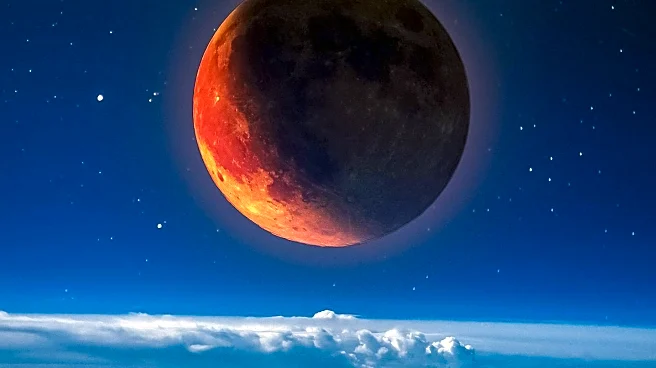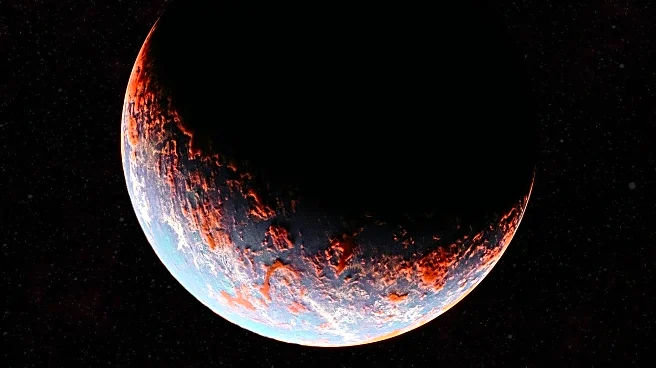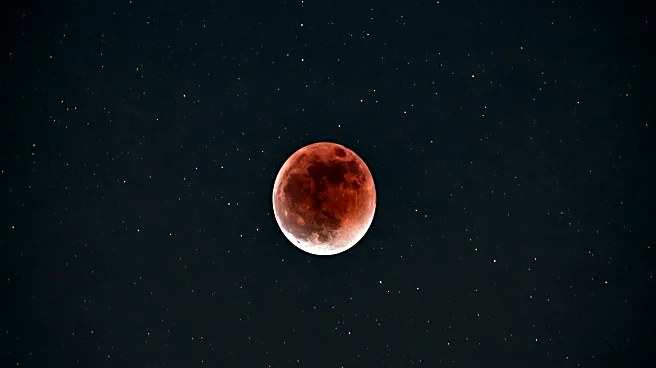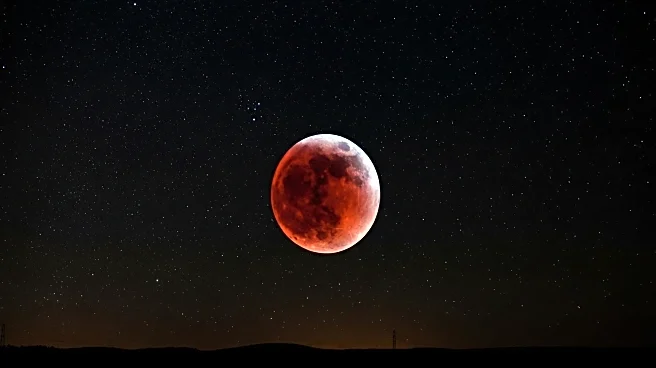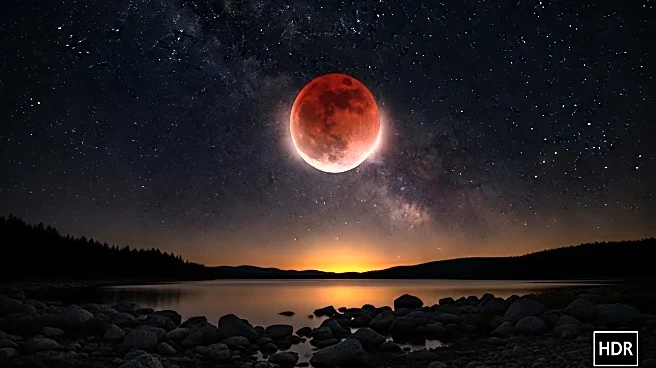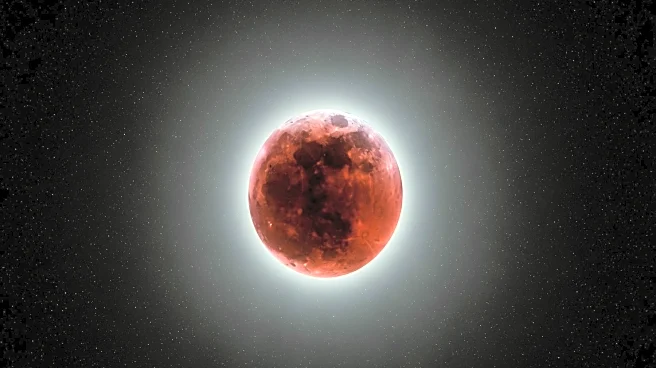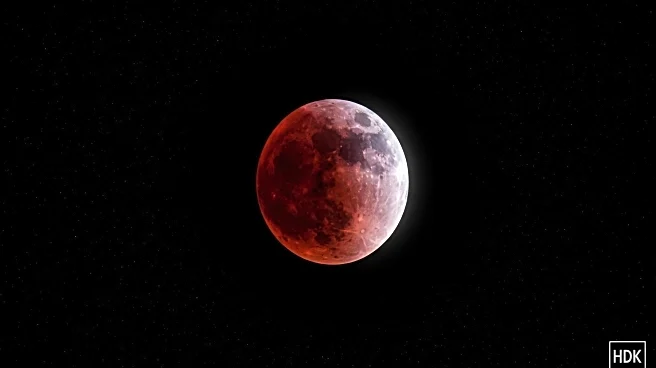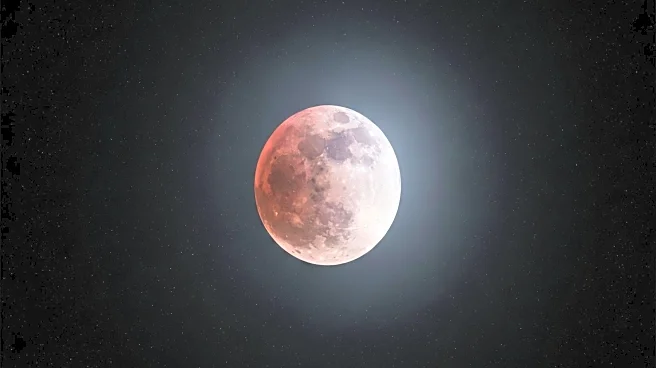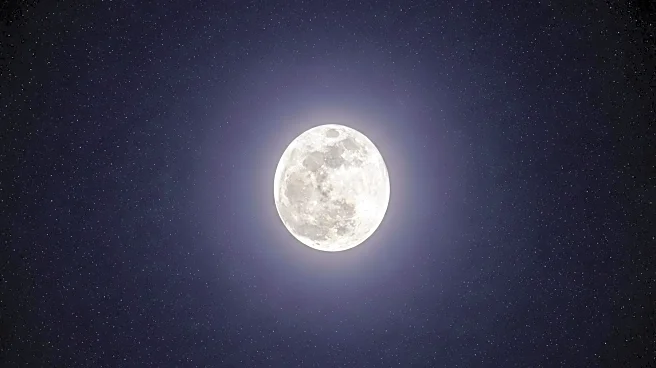What's Happening?
A total lunar eclipse, known as a 'blood moon,' is set to occur from March 2-4, 2026. This celestial event will be visible from Western North America, Australia, New Zealand, and East Asia. During the eclipse, the moon will pass through Earth's umbra, resulting in a reddish-orange appearance for 58 minutes. The eclipse will be the first total lunar eclipse since September 2025 and the last until December 2028. Viewing conditions will vary based on local weather, with certain regions offering better visibility.
Why It's Important?
Lunar eclipses are significant astronomical events that attract interest from scientists and the general public alike. They provide opportunities for educational outreach and public engagement with astronomy. The 'blood moon' phenomenon is visually striking, drawing attention to the mechanics of celestial movements. This event can inspire interest in space science and encourage people to explore the night sky, fostering a greater appreciation for the universe and its wonders.
What's Next?
Following the March 2026 eclipse, the next total lunar eclipse will occur on December 31, 2028. Astronomers and enthusiasts are preparing for this event, with plans for observation and study. Educational resources and viewing guides will be made available to help the public understand and appreciate these phenomena. The anticipation of future eclipses continues to drive interest in astronomy and space exploration.
